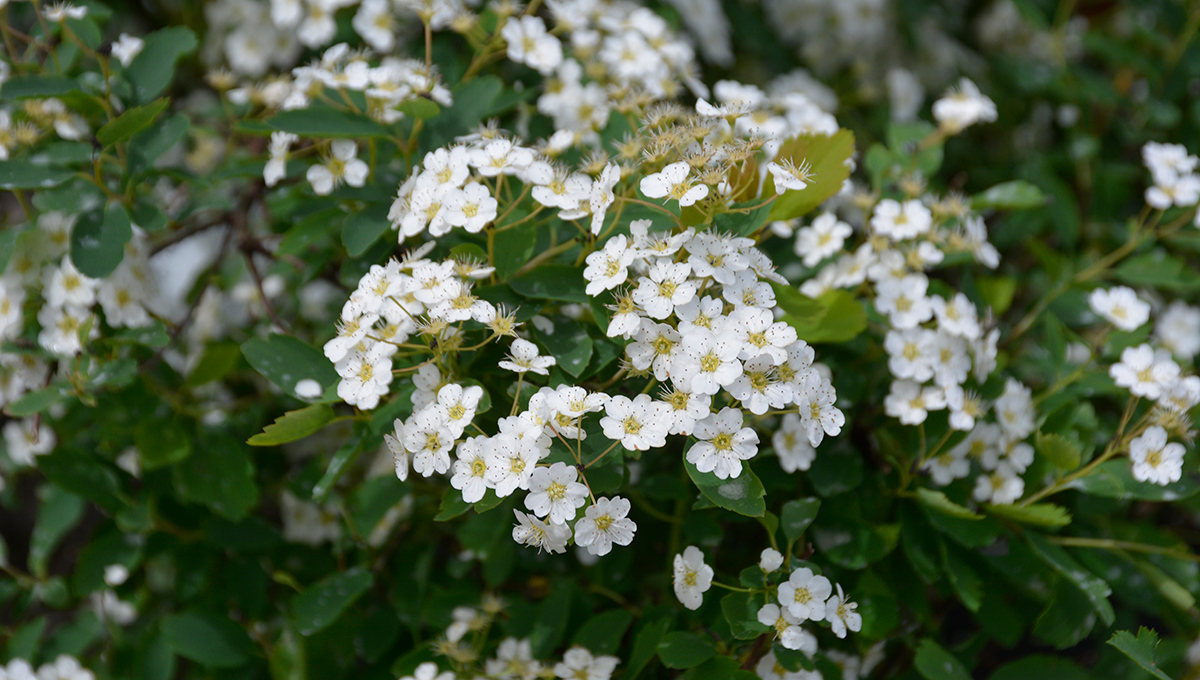Growing Spirea

Like hydrangea, rhododendron, and lilac, spirea (or spiraea) has joined the ranks as one of the most popular flowering shrubs for the home garden. Their long-lasting blooms and ability to serve a variety of landscape functions — from mass plantings and perennial borders to groundcovers and informal hedges — have made them a staple in gardens of all sizes. If you’re only familiar with the traditional bridal wreath spirea, a large shrub that can become ungainly if not pruned, you’ll love the versatility and carefree nature of the newer spirea cultivars showcased here. They not only have tidier growth habits but also more vibrant foliage, so they provide seasonal interest even when not in bloom.
Zones: Most are hardy from zones 4-8, but some varieties are more heat and cold tolerant.
Size range: 1 to 8 feet tall and up to 6 feet wide.
Light exposure: For the best foliage color and flower production, give spirea full sun (at least 6 hours of direct light daily).
Soil preference: Well-drained, neutral to slightly acidic soil (pH 6 to 7).
Bloom period: Spirea bushes are classified as spring-blooming (budding out in May and June) or summer-blooming (budding out in July and August) varieties.
Growth rate: Moderate to fast.
Wildlife benefits: Attracts bees and butterflies; deer resistant.
Invasive: Some species seed aggressively in parts of the country. Check with local experts for regionally appropriate spirea selections. New cultivars, such as Double Play Doozie® spirea have been developed to be seedless and non-invasive, or consider sweetspire or summersweet as alternatives.
Spirea Types
Japanese spirea (Spiraea japonica):
Available in a wide array of cultivars, Japanese spirea offers the most variety in terms of size, flower color, and leaf color. It produces abundant clusters of white, light pink, rosy red or purple flowers that adorn the branches in late spring and summer. Sizes range from dwarf types, such as ‘Little Princess’, to larger shrubs that grow to 5 feet or taller. Most varieties have finely textured green or blue-green leaves, but some cultivars have yellow or chartreuse foliage that changes color throughout the season.
Bridal wreath spirea (Spiraea prunifolia):
This old-fashioned classic is instantly recognizable by its tiny carnation-like double white flowers that cover the bare branches in early spring. One of the largest of the spirea species, bridal wreath reaches 4 to 8 feet high and 6 to 8 feet wide and has loose, arching branches that give it a fountain-like effect. In fall, the finely serrated green leaves turn shades of yellow, red, and orange.
Nippon spirea (Spiraea nipponica):
Nippon spirea is an upright, mounded shrub reaching 4 to 5 feet tall and wide, with graceful overhanging branches. Bouquet-like clusters of small white flowers smother the branches in late spring. The deep blue-green leaves are a handsome attribute during the summer months.
Birchleaf spirea (Spiraea betulifolia):
A compact, rounded shrub growing 3 to 4 feet tall and wide. White flowers appear in early to midsummer, but this spirea is at its most colorful in autumn, when the dark green, birch-like leaves turn rich shades of red, orange, and purple
Early spirea (Spiraea thunbergii):
This 3- to 5-foot-tall spirea is one of the first to bloom in early spring. The white umbrella-shaped flowers emerge on slender, arching branches before the finely textured pale-green foliage, which takes on yellow and orange tones in fall.
Planting
When to plant spirea
- Spring or fall
Where to plant spirea
- Make sure you have chosen a site that drains well and receives at least 6 hours of sun each day.
How to plant spirea
- Dig a hole that is twice as wide as the container and just as deep. Remove the plant from its container and gently loosen any tightly wound roots. Place the plant in the hole and backfill with the excavated soil. Water thoroughly to settle the soil. Cover with a 2-3” layer of mulch, keeping it away from the stems.
Spacing spirea
- Space spirea plants 2 to 15 feet apart, depending on the expected mature width of the plant and the application. To create dense, full spirea hedges, you can space your plants more closely together as long as you give them some elbow room.
Care
How to prune zinnia
- Don’t hesitate to give spireas a liberal pruning, if needed, to maintain their shape and to remove dead or broken branches. This is best done in late winter or early spring while your plants are dormant. Giving spireas another lighter pruning after they bloom in spring or early summer will promote new blooms and reinvigorate foliage growth. Because spireas are fast growers, they will recover quickly.
Watering:
Keep newly planted spireas well-watered until they become established. Mature spireas are drought tolerant and only need watering when the soil becomes dry. Spireas don’t like wet feet, so avoid oversaturating the soil.
Fertilizing:
Spireas are not heavy feeders, so they’ll do fine with an application of controlled-release fertilizer in early spring, which should provide enough sustenance for the entire growing season.
Pests/Diseases
- Spirea generally aren’t bothered by any serious pest or disease problems. However, they are related to roses and can be susceptible to the same pests and diseases as roses, such as leaf spot, powdery mildew and aphids.
Website: www.gardendesign.com